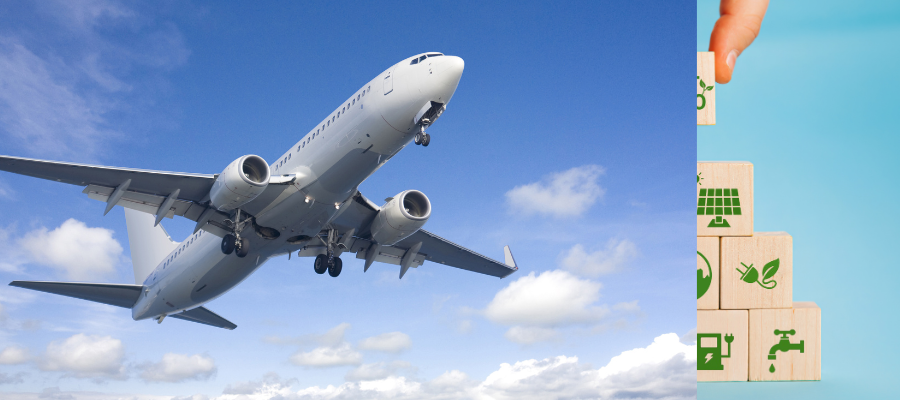🕒 Article read time: 2 minutes
Net zero aviation: How much closer are we to lift-off?

In July 2022, the Department for Transport (DfT) published its Jet Zero Strategy, where it sets out the government’s approach to transitioning UK aviation to a net zero industry by 2050. 12 months later, DfT has now released Jet Zero strategy: one year on, to update on its progress.
Commenting on the report, Ellis Shelton, Policy Advisor at Logistics UK, provides an overview of milestones achieved so far and the challenges that remain on the path ahead.
“Logistics UK supports the government’s ambition to decarbonise aviation rapidly,” he begins. “And it’s promising to see the progress that’s been made so far, especially its commitment to accelerate the production of Sustainable Aviation Fuels (SAFs) and promote their use to industry. In the view of Logistics UK, moving away fully from conventional fossil jet fuels to SAFs is the surest and most achievable way to realise sustainable net zero flights.”
UK aviation emissions will reach around 67 MtCO2e by 2050 without any intervention, but around 40% of these emissions could be removed through use of SAFs, according to the report.
“Logistics UK supports the government’s decision to mandate the use of at least 10% SAFs in the UK jet fuel mix by 2030, but our members need to see a commitment that future administrations will uphold this requirement to ensure long-term certainty,” says Shelton.
“Businesses face barriers when trying to scale SAF production and distribution globally,” he continues. “And on the domestic level, we need to see these fuels manufactured in the UK to keep fuel costs affordable for businesses and to ensure availability of product to meet demand.”
DfT has expressed its wish to see SAFs produced in volume in the UK, noting in the report that domestic production of SAF could support 10,350 jobs by 2030 across the supply chain, rising to 60,000 in 2050.
Milestones detailed by government include the launch of another round of the Advanced Fuels Fund to unlock an additional £55.8m in funding to support UK SAF projects; the publication of the Jet Zero Council’s two-year plan, which sets out recommendations to help stimulate SAF production; the launch of the 2040 Zero Emission Airport Target Call for Evidence; and an agreement for a net zero 2050 CO2 emissions goal for international aviation.
“Within the report, DfT recognises that there are significant challenges to overcome to reach the goal of net zero,” says Shelton. “The strategy relies on technologies that are still emerging – zero-carbon emission aircraft, SAFs and Greenhouse Gas Removals (GGRs) – so technological readiness will be key; companies also need to be confident investing in their development and production will yield their desired, or required, revenue.”
DfT details its next steps on the route to net zero in the paper, with focuses on system efficiencies, sustainable fuel, zero emission flight and addressing non-CO2. Challenges include the need for international ambition to strive for net zero, and the availability of SAF feedstock and hydrogen fuels.
*www.logistics.org.uk/campaigns
Published On: 27/07/2023 15:00:00

Comments Section
If you are a Logistics UK member login to add comments.